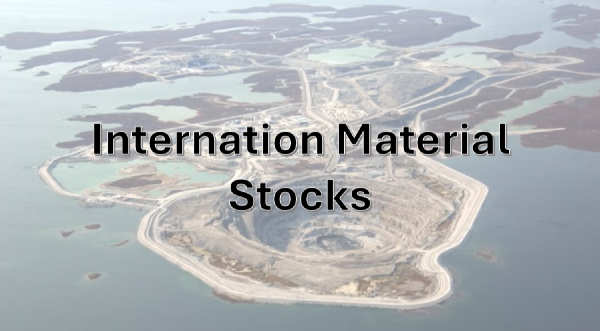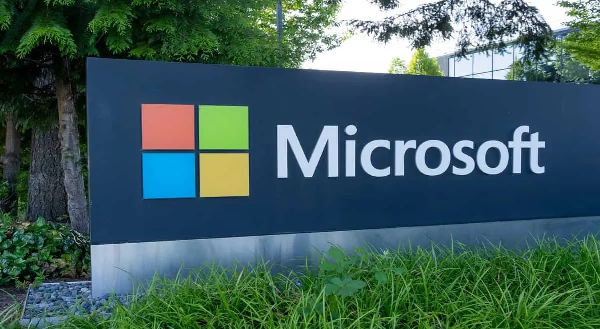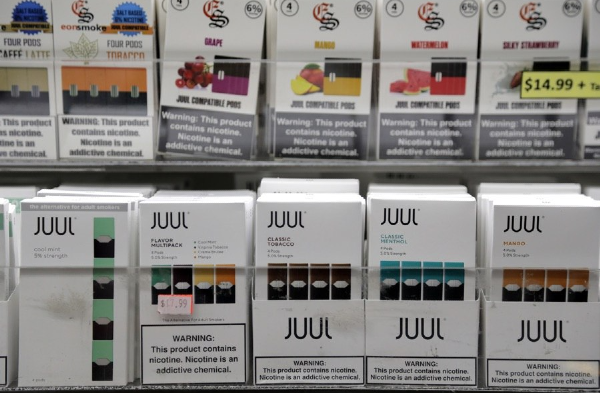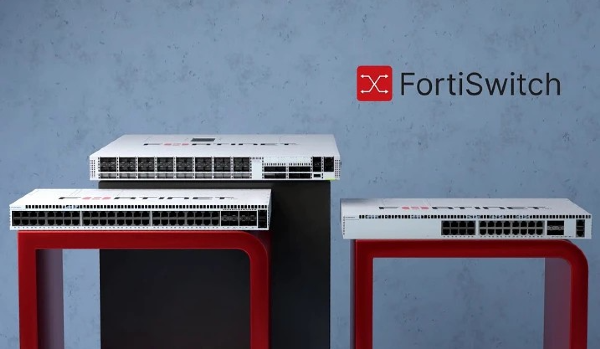Key Takeaways:
Here are just some of the international material companies you can invest in:
Here's a comprehensive markdown table with all the mentioned stocks, their headquarters, key stats, and U.S. stock symbols:
| Company |
Headquarters |
Key Stats |
U.S. Stock Symbol |
| Rio Tinto |
United Kingdom |
Major global mining firm specializing in iron ore, aluminum, and copper |
RIO |
| BHP Group |
Australia |
Diversified resource extraction, strong dividend yield |
BHP |
| Vale S.A. |
Brazil |
Leading producer of nickel and iron ore, global logistics |
VALE |
| BASF SE |
Germany |
Global chemicals manufacturer, strong industrial applications |
BASFY |
| Linde plc |
United Kingdom |
Largest industrial gas provider, major player in hydrogen innovation |
LIN |
| Nutrien Ltd. |
Canada |
Agricultural chemicals firm with extensive global operations |
NTR |
| CRH plc |
Ireland |
Leading supplier of building materials, benefiting from infrastructure investments |
CRH |
| Vicat SA |
France |
Cement and concrete manufacturer with focus on sustainability |
VCTPF |
| Holcim Ltd. |
Switzerland |
Sustainable construction materials, strong ESG ratings |
HCMLY |
| Suzano S.A. |
Brazil |
Major pulp and paper company, leader in sustainable forestry |
SUZ |
| Stora Enso |
Finland |
Renewable wood-based products firm, strong ESG commitments |
SEOAY |
| UPM-Kymmene Corp. |
Finland |
Bio-based materials and paper production, sustainability leader |
UPMMY |
The global materials sector plays a crucial role in supporting industries such as construction, manufacturing, and technology. From essential building materials like cement and steel to advanced composites used in aerospace and electronics, materials drive innovation and economic growth. Technological advancements, including AI-driven material optimization and sustainable production methods, are reshaping the industry. As demand for infrastructure and high-tech applications grows, companies in this sector continue to expand their influence across global markets.
Investing in international material stocks offers U.S. investors diversification and exposure to resource-rich economies. Many foreign companies dominate specific material industries, such as mining, chemicals, and forestry, providing unique investment opportunities. Historically, international stocks have helped balance portfolio risk by offering returns that may not correlate directly with U.S. market trends. Additionally, currency fluctuations and global trade dynamics can create profitable investment windows for those who strategically allocate funds across international material stocks.
U.S. exchanges provide convenient access to global material companies through American Depositary Receipts (ADRs) and direct listings. Major exchanges like the NYSE and NASDAQ host international firms seeking capital and visibility in the world's largest financial market. These listings allow investors to trade foreign stocks in U.S. dollars, eliminating currency conversion complexities while benefiting from the liquidity and regulatory oversight of American markets. As more global companies recognize the advantages of listing in the U.S., investors gain broader access to high-quality material stocks from diverse regions.
Why Invest in International Material Stocks?
Investing in international material stocks provides diversification benefits that help mitigate risk and enhance portfolio stability. Global diversification allows investors to spread their assets across different economies, reducing exposure to localized downturns. Nearly 50% of global stock market opportunities exist outside the U.S., making international investments a crucial component of a well-balanced portfolio. Additionally, emerging markets often experience higher economic growth rates, which can translate into stronger stock performance over time.
Exposure to emerging markets and resource-rich regions offers investors access to industries that drive global economic expansion. Many developing countries control critical minerals such as cobalt, copper, and lithium, which are essential for technology and infrastructure development. As these nations exert greater control over their natural resources, investors can benefit from strategic shifts in supply chains and pricing dynamics. Furthermore, emerging markets contribute significantly to global GDP growth, with some regions outperforming developed economies in terms of industrialization and urbanization.
Comparing the performance of U.S. and international material stocks reveals cyclical trends that favor global diversification. While U.S. stocks have historically outperformed international equities, global stocks have shown periods of stronger returns, particularly during commodity upcycles. In 2025, international stocks have outpaced the S&P 500, driven by optimism surrounding China's recovery and European market strength. However, currency risks remain a key consideration, as exchange rate fluctuations can impact returns. A strong U.S. dollar can reduce the value of foreign investments, making currency hedging an essential strategy for international investors.
Criteria for Selecting the Best International Material Stocks
Market Capitalization and Financial Health
Market capitalization is a key indicator of a company's size and stability. Larger material companies often have diversified revenue streams, reducing risk during economic downturns. Financial health is assessed through liquidity ratios, debt levels, and profitability metrics. Companies like Linde PLC (LIN) and BHP Group (BHP) maintain strong balance sheets, ensuring resilience in volatile markets.
Revenue Growth and Profitability
Consistent revenue growth signals strong demand and operational efficiency. Profitability metrics such as return on equity (ROE) and net profit margins help investors gauge financial performance. Rio Tinto (RIO) and CRH plc (CRH) have demonstrated steady revenue expansion, benefiting from global infrastructure projects and commodity demand.
ESG and Sustainability Considerations
Environmental, Social, and Governance (ESG) factors are increasingly influencing investment decisions. Companies with strong sustainability practices attract long-term investors and mitigate regulatory risks. Holcim Ltd. (HCMLY) and Suzano S.A. (SUZ) prioritize eco-friendly production methods, aligning with global sustainability goals.
Industry Positioning and Competitive Advantage
A company's market position determines its ability to withstand competition and capitalize on industry trends. Firms with strong supply chains, technological innovation, and strategic partnerships gain a competitive edge. Compagnie de Saint-Gobain (CODY.Y) and Martin Marietta Materials (MLM) leverage their global presence to maintain industry leadership.
Top International Material Stocks on U.S. Exchanges
Investing in international material stocks listed on U.S. exchanges offers diversification and access to globally dominant companies in mining, chemicals, and construction materials. Industry leaders like BHP Group (BHP) and Rio Tinto (RIO) provide exposure to essential commodities such as iron ore and copper, while Linde plc (LIN) dominates the industrial gas sector with strong profitability. Companies like CRH plc (CRH) and Holcim Ltd. (HCMLY) benefit from infrastructure demand, making them attractive investments for long-term growth. By trading these stocks on U.S. exchanges, investors gain the convenience of liquidity, regulatory oversight, and seamless access to international markets without the complexity of foreign transactions.
Leading Companies Across Material Industries
Several international material stocks trade on U.S. exchanges, offering investors exposure to diverse sectors. Linde PLC (LIN) dominates the industrial gas market, while BHP Group (BHP) and Rio Tinto (RIO) lead in mining and metals. CRH plc (CRH) and Holcim Ltd. (HCMLY) specialize in construction materials, benefiting from infrastructure investments.
International stocks to Access in the U.S.
Investors can access top international material stocks through major exchanges like NYSE and NASDAQ, ensuring liquidity and regulatory oversight. Linde PLC (LIN) stands out with a market capitalization exceeding $210 billion, solidifying its dominance in the industrial gas sector. The company maintains strong financial health, with consistent revenue growth and profitability. BHP Group (BHP) remains a favorite among income-focused investors, offering a dividend yield of approximately 4.03%. Meanwhile, Suzano S.A. (SUZ) continues to expand its sustainable forestry operations, reinforcing its ESG commitments through biodiversity conservation and carbon reduction initiatives.
A. Metals & Mining
The metals and mining industry plays a vital role in global infrastructure and manufacturing, supplying essential materials like iron ore, copper, and aluminum. Leading companies such as Rio Tinto, BHP Group, and Vale S.A. drive innovation and efficiency in resource extraction, shaping global commodity markets.
Rio Tinto (RIO)
Rio Tinto is a global mining powerhouse with extensive operations in iron ore, aluminum, and copper. The company plays a critical role in supplying raw materials for infrastructure and technology development. With a strong presence in Australia and other resource-rich regions, Rio Tinto benefits from long-term commodity demand.
BHP Group (BHP)
BHP Group is an Australian mining giant specializing in diversified resource extraction. The company has a robust portfolio spanning iron ore, copper, and coal, making it a key player in global commodity markets. BHP’s strong dividend yield and disciplined financial management make it an attractive option for investors seeking stability and income.
Vale S.A. (VALE)
Vale S.A. is a Brazilian mining corporation focused on nickel, iron ore, and logistics. As one of the world’s largest iron ore producers, Vale plays a crucial role in global steel production. Despite recent fluctuations in iron ore prices, the company continues to optimize operations and expand its logistics network to maintain profitability.
These companies represent strong investment opportunities within the materials sector, offering exposure to essential commodities and global market trends. Let me know if you’d like further insights!
BASF SE (BASFY) – German Chemicals Manufacturer
BASF SE is a leading German chemicals manufacturer with a diverse portfolio spanning industrial solutions, surface technologies, and agricultural applications. The company operates a highly integrated production system known as the Verbund, which enhances efficiency and sustainability. BASF’s products serve industries such as automotive, construction, and electronics, making it a key player in global supply chains. Its commitment to innovation and sustainability ensures long-term growth, with investments in eco-friendly materials and advanced chemical processes.
Linde plc (LIN) – Industrial Gas Company
Linde plc is the world’s largest industrial gas producer, benefiting from strong market demand across sectors like healthcare, manufacturing, and energy. The company’s business model relies on long-term contracts and high switching costs, ensuring stable revenue streams. Linde has a significant presence in clean hydrogen and carbon capture technologies, positioning itself as a leader in the energy transition. With a $10.4 billion project backlog, including investments in blue and green hydrogen, Linde continues to expand its global footprint.
Nutrien Ltd. (NTR) – Canadian Agricultural Chemicals Firm
Nutrien Ltd. is a major global provider of crop inputs and agricultural services, operating a vast network of production and distribution facilities. The company supplies essential fertilizers, including potash, nitrogen, and phosphate, to farmers worldwide. Nutrien’s retail network serves over 600,000 customer accounts, ensuring efficient delivery of agricultural solutions. Its focus on sustainability and innovation supports long-term food security, making it a critical player in the global agricultural industry.
CRH plc (CRH) – Leading Supplier of Building Materials
CRH plc is a global leader in building materials, supplying essential products for infrastructure, commercial, and residential construction. The company operates in over 30 countries, offering solutions in cement, aggregates, and asphalt. CRH’s diversified portfolio and strategic acquisitions have strengthened its market position, ensuring steady revenue growth. With a focus on sustainability, CRH integrates eco-friendly practices into its operations, including carbon reduction initiatives and circular economy solutions.
Vicat SA (VCTPF) – French Cement and Concrete Manufacturer
Vicat SA is a prominent French cement and concrete manufacturer, known for its contributions to major infrastructure projects. The company has launched the VAIA Project, a large-scale initiative aimed at decarbonizing cement production through carbon capture technology. Vicat’s commitment to sustainability is evident in its efforts to reduce CO₂ emissions and enhance energy efficiency across its facilities. With a strong presence in Europe and emerging markets, Vicat continues to expand its footprint in the global construction sector.
Holcim Ltd. (HCMLY) – Swiss-Based Sustainability Leader
Holcim Ltd. is a Swiss-based construction materials company focused on sustainable building solutions. The company leads the industry in circular construction, low-carbon cement, and energy-efficient materials. Holcim’s ESG initiatives have earned high ratings, including an ‘A’ score in climate change from the Carbon Disclosure Project. By advancing carbon capture technologies and expanding recycling efforts, Holcim is setting new standards for environmentally responsible construction.
Forestry & Paper Products
Suzano S.A. (SUZ) – Sustainable Forestry Leader
Suzano S.A. is a Brazilian pulp and paper company that integrates sustainable forestry practices into its operations. The company manages over 2.6 million hectares of land, with 1 million hectares dedicated to native forest conservation. Suzano prioritizes biodiversity protection, ensuring that its eucalyptus plantations coexist with preserved ecosystems. Its commitment to sustainability is reinforced through certifications from the Forest Stewardship Council (FSC) and the Programme for the Endorsement of Forest Certification (PEFC).
Stora Enso (SEOAY) – ESG-Driven Wood-Based Products Firm
Stora Enso is a Finnish company specializing in renewable wood-based products, with a strong focus on ESG principles. The company has earned high sustainability ratings, including an AAA score from MSCI and a Platinum rating from EcoVadis. Stora Enso integrates biodiversity monitoring and carbon sequestration into its forestry management, ensuring minimal environmental impact. Its innovative approach includes replacing fossil-based materials with renewable alternatives, reinforcing its leadership in sustainable packaging and construction solutions.
UPM-Kymmene Corporation (UPMMY) – Bio-Based Materials Innovator
UPM-Kymmene Corporation is a European leader in bio-based materials and paper production, driving sustainability through innovation. The company operates modern paper mills across Europe and North America, utilizing advanced recycling and resource-efficient processes. UPM’s strategic focus on bioeconomy solutions positions it as a pioneer in replacing fossil-based materials with renewable alternatives. Its commitment to environmental responsibility is evident in its 150-year history of sustainable forestry management and continuous investment in eco-friendly production.
Geopolitical and Trade Risks Impacting Material Stocks
Geopolitical tensions and trade policies significantly affect material stocks, as global supply chains rely on stable international relations. Conflicts, sanctions, and trade restrictions can disrupt raw material availability, leading to price fluctuations and supply shortages. For example, heightened geopolitical risks have historically caused stock prices to decline by an average of 1% per month, with emerging markets experiencing even sharper drops. Investors must monitor global events and diversify holdings to mitigate exposure to geopolitical instability.
Commodity Price Volatility and Demand Fluctuations
Material stocks are highly sensitive to commodity price swings, which are influenced by macroeconomic trends, supply disruptions, and demand shifts. Over the past four years, annualized commodity price volatility has averaged between 10% and 20%, with some commodities experiencing price swings of up to 70%. Companies in the materials sector must navigate these fluctuations by employing financial hedging strategies and maintaining flexible supply chains. Investors should consider companies with strong risk management practices to withstand market turbulence.
Regulation Challenges and Sustainability Requirements
Increasing regulatory scrutiny and sustainability mandates are reshaping the materials industry. Governments worldwide are implementing stricter environmental policies, such as carbon emissions reporting and sustainable sourcing requirements. The SEC’s climate disclosure rules and the EU’s Corporate Sustainability Reporting Directive (CSRD) are examples of evolving regulations that impact publicly traded material companies. Investors should assess a company’s ESG compliance and long-term sustainability initiatives to ensure alignment with regulatory trends.
Exchange Rate Risks for U.S.-Based Investors
Currency fluctuations pose a significant risk for U.S. investors holding international material stocks. Exchange rate movements can either amplify or diminish returns, depending on the strength of the U.S. dollar relative to foreign currencies. Over the past decade, currency-hedged international stock indices have outperformed unhedged versions by 12.5%, highlighting the importance of managing currency exposure. Investors can mitigate exchange rate risks through hedging strategies or by selecting companies with strong financial resilience in multiple currency environments.
Strategies for Investing in International Materials Stocks
Investors can gain exposure to international material stocks through ETFs or direct stock purchases, balancing risk while capitalizing on global industry trends. A well-diversified portfolio should include various sub-sectors, such as metals, chemicals, and forestry, to mitigate volatility and optimize returns. Utilizing both technical and fundamental analysis ensures informed stock selection, helping investors identify opportunities for long-term growth and stability.
ETF Alternatives vs. Direct Stock Purchases
Investors can gain exposure to international material stocks through exchange-traded funds (ETFs) or direct stock purchases. ETFs provide diversified access to multiple companies within the sector, reducing individual stock risk. Funds like Vanguard Total International Stock ETF (VXUS) offer broad global exposure, while sector-specific ETFs focus on materials. Direct stock purchases allow investors to target specific companies with strong fundamentals, but they require more research and risk management.
Balancing Sector Exposure Within a Diversified Portfolio
A well-balanced portfolio should include exposure to various material sub-sectors, such as metals, chemicals, and forestry products. Diversification across industries and geographic regions helps mitigate sector-specific risks. Portfolio rebalancing strategies ensure optimal allocation, allowing investors to capitalize on global economic trends. Investors should assess sector performance and adjust holdings accordingly to maintain stability and growth potential.
Technical vs. Fundamental Analysis in Material Stock Selection
Investors can use technical and fundamental analysis to evaluate material stocks. Fundamental analysis focuses on financial health, revenue growth, and industry positioning, while technical analysis examines price trends and market sentiment. Combining both approaches enhances stock selection accuracy, helping investors identify undervalued opportunities and optimal entry points.
Long-Term vs. Short-Term Investment Strategies
Material stocks can be approached with either long-term or short-term investment strategies. Long-term investors focus on industry growth trends, sustainability initiatives, and macroeconomic cycles, while short-term traders capitalize on price volatility and market fluctuations. Understanding investment horizons and risk tolerance is crucial for selecting the right strategy.
Conclusion
International material stocks provide U.S. investors with access to global leaders in mining, chemicals, construction materials, and forestry products. These stocks offer diversification benefits, exposure to emerging markets, and opportunities to capitalize on resource-driven industries. While geopolitical risks, commodity price fluctuations, and currency volatility are key considerations, strategic investment approaches—such as ETFs, sector balancing, and thorough financial analysis—help mitigate challenges. By selecting well-positioned companies with strong ESG practices, investors can build a resilient portfolio that aligns with long-term market trends. As global industries continue to evolve, international material stocks remain valuable assets for those seeking growth and stability in a dynamic economic landscape.






























Here are just some of the international material companies you can invest in:
Here's a comprehensive markdown table with all the mentioned stocks, their headquarters, key stats, and U.S. stock symbols:
The global materials sector plays a crucial role in supporting industries such as construction, manufacturing, and technology. From essential building materials like cement and steel to advanced composites used in aerospace and electronics, materials drive innovation and economic growth. Technological advancements, including AI-driven material optimization and sustainable production methods, are reshaping the industry. As demand for infrastructure and high-tech applications grows, companies in this sector continue to expand their influence across global markets.
Investing in international material stocks offers U.S. investors diversification and exposure to resource-rich economies. Many foreign companies dominate specific material industries, such as mining, chemicals, and forestry, providing unique investment opportunities. Historically, international stocks have helped balance portfolio risk by offering returns that may not correlate directly with U.S. market trends. Additionally, currency fluctuations and global trade dynamics can create profitable investment windows for those who strategically allocate funds across international material stocks.
U.S. exchanges provide convenient access to global material companies through American Depositary Receipts (ADRs) and direct listings. Major exchanges like the NYSE and NASDAQ host international firms seeking capital and visibility in the world's largest financial market. These listings allow investors to trade foreign stocks in U.S. dollars, eliminating currency conversion complexities while benefiting from the liquidity and regulatory oversight of American markets. As more global companies recognize the advantages of listing in the U.S., investors gain broader access to high-quality material stocks from diverse regions.
Why Invest in International Material Stocks?
Investing in international material stocks provides diversification benefits that help mitigate risk and enhance portfolio stability. Global diversification allows investors to spread their assets across different economies, reducing exposure to localized downturns. Nearly 50% of global stock market opportunities exist outside the U.S., making international investments a crucial component of a well-balanced portfolio. Additionally, emerging markets often experience higher economic growth rates, which can translate into stronger stock performance over time.
Exposure to emerging markets and resource-rich regions offers investors access to industries that drive global economic expansion. Many developing countries control critical minerals such as cobalt, copper, and lithium, which are essential for technology and infrastructure development. As these nations exert greater control over their natural resources, investors can benefit from strategic shifts in supply chains and pricing dynamics. Furthermore, emerging markets contribute significantly to global GDP growth, with some regions outperforming developed economies in terms of industrialization and urbanization.
Comparing the performance of U.S. and international material stocks reveals cyclical trends that favor global diversification. While U.S. stocks have historically outperformed international equities, global stocks have shown periods of stronger returns, particularly during commodity upcycles. In 2025, international stocks have outpaced the S&P 500, driven by optimism surrounding China's recovery and European market strength. However, currency risks remain a key consideration, as exchange rate fluctuations can impact returns. A strong U.S. dollar can reduce the value of foreign investments, making currency hedging an essential strategy for international investors.
Criteria for Selecting the Best International Material Stocks
Market Capitalization and Financial Health
Market capitalization is a key indicator of a company's size and stability. Larger material companies often have diversified revenue streams, reducing risk during economic downturns. Financial health is assessed through liquidity ratios, debt levels, and profitability metrics. Companies like Linde PLC (LIN) and BHP Group (BHP) maintain strong balance sheets, ensuring resilience in volatile markets.
Revenue Growth and Profitability
Consistent revenue growth signals strong demand and operational efficiency. Profitability metrics such as return on equity (ROE) and net profit margins help investors gauge financial performance. Rio Tinto (RIO) and CRH plc (CRH) have demonstrated steady revenue expansion, benefiting from global infrastructure projects and commodity demand.
ESG and Sustainability Considerations
Environmental, Social, and Governance (ESG) factors are increasingly influencing investment decisions. Companies with strong sustainability practices attract long-term investors and mitigate regulatory risks. Holcim Ltd. (HCMLY) and Suzano S.A. (SUZ) prioritize eco-friendly production methods, aligning with global sustainability goals.
Industry Positioning and Competitive Advantage
A company's market position determines its ability to withstand competition and capitalize on industry trends. Firms with strong supply chains, technological innovation, and strategic partnerships gain a competitive edge. Compagnie de Saint-Gobain (CODY.Y) and Martin Marietta Materials (MLM) leverage their global presence to maintain industry leadership.
Top International Material Stocks on U.S. Exchanges
Investing in international material stocks listed on U.S. exchanges offers diversification and access to globally dominant companies in mining, chemicals, and construction materials. Industry leaders like BHP Group (BHP) and Rio Tinto (RIO) provide exposure to essential commodities such as iron ore and copper, while Linde plc (LIN) dominates the industrial gas sector with strong profitability. Companies like CRH plc (CRH) and Holcim Ltd. (HCMLY) benefit from infrastructure demand, making them attractive investments for long-term growth. By trading these stocks on U.S. exchanges, investors gain the convenience of liquidity, regulatory oversight, and seamless access to international markets without the complexity of foreign transactions.
Leading Companies Across Material Industries
Several international material stocks trade on U.S. exchanges, offering investors exposure to diverse sectors. Linde PLC (LIN) dominates the industrial gas market, while BHP Group (BHP) and Rio Tinto (RIO) lead in mining and metals. CRH plc (CRH) and Holcim Ltd. (HCMLY) specialize in construction materials, benefiting from infrastructure investments.
International stocks to Access in the U.S.
Investors can access top international material stocks through major exchanges like NYSE and NASDAQ, ensuring liquidity and regulatory oversight. Linde PLC (LIN) stands out with a market capitalization exceeding $210 billion, solidifying its dominance in the industrial gas sector. The company maintains strong financial health, with consistent revenue growth and profitability. BHP Group (BHP) remains a favorite among income-focused investors, offering a dividend yield of approximately 4.03%. Meanwhile, Suzano S.A. (SUZ) continues to expand its sustainable forestry operations, reinforcing its ESG commitments through biodiversity conservation and carbon reduction initiatives.
A. Metals & Mining
The metals and mining industry plays a vital role in global infrastructure and manufacturing, supplying essential materials like iron ore, copper, and aluminum. Leading companies such as Rio Tinto, BHP Group, and Vale S.A. drive innovation and efficiency in resource extraction, shaping global commodity markets.
Rio Tinto (RIO)
Rio Tinto is a global mining powerhouse with extensive operations in iron ore, aluminum, and copper. The company plays a critical role in supplying raw materials for infrastructure and technology development. With a strong presence in Australia and other resource-rich regions, Rio Tinto benefits from long-term commodity demand.
BHP Group (BHP)
BHP Group is an Australian mining giant specializing in diversified resource extraction. The company has a robust portfolio spanning iron ore, copper, and coal, making it a key player in global commodity markets. BHP’s strong dividend yield and disciplined financial management make it an attractive option for investors seeking stability and income.
Vale S.A. (VALE)
Vale S.A. is a Brazilian mining corporation focused on nickel, iron ore, and logistics. As one of the world’s largest iron ore producers, Vale plays a crucial role in global steel production. Despite recent fluctuations in iron ore prices, the company continues to optimize operations and expand its logistics network to maintain profitability.
These companies represent strong investment opportunities within the materials sector, offering exposure to essential commodities and global market trends. Let me know if you’d like further insights!
BASF SE (BASFY) – German Chemicals Manufacturer
BASF SE is a leading German chemicals manufacturer with a diverse portfolio spanning industrial solutions, surface technologies, and agricultural applications. The company operates a highly integrated production system known as the Verbund, which enhances efficiency and sustainability. BASF’s products serve industries such as automotive, construction, and electronics, making it a key player in global supply chains. Its commitment to innovation and sustainability ensures long-term growth, with investments in eco-friendly materials and advanced chemical processes.
Linde plc (LIN) – Industrial Gas Company
Linde plc is the world’s largest industrial gas producer, benefiting from strong market demand across sectors like healthcare, manufacturing, and energy. The company’s business model relies on long-term contracts and high switching costs, ensuring stable revenue streams. Linde has a significant presence in clean hydrogen and carbon capture technologies, positioning itself as a leader in the energy transition. With a $10.4 billion project backlog, including investments in blue and green hydrogen, Linde continues to expand its global footprint.
Nutrien Ltd. (NTR) – Canadian Agricultural Chemicals Firm
Nutrien Ltd. is a major global provider of crop inputs and agricultural services, operating a vast network of production and distribution facilities. The company supplies essential fertilizers, including potash, nitrogen, and phosphate, to farmers worldwide. Nutrien’s retail network serves over 600,000 customer accounts, ensuring efficient delivery of agricultural solutions. Its focus on sustainability and innovation supports long-term food security, making it a critical player in the global agricultural industry.
CRH plc (CRH) – Leading Supplier of Building Materials
CRH plc is a global leader in building materials, supplying essential products for infrastructure, commercial, and residential construction. The company operates in over 30 countries, offering solutions in cement, aggregates, and asphalt. CRH’s diversified portfolio and strategic acquisitions have strengthened its market position, ensuring steady revenue growth. With a focus on sustainability, CRH integrates eco-friendly practices into its operations, including carbon reduction initiatives and circular economy solutions.
Vicat SA (VCTPF) – French Cement and Concrete Manufacturer
Vicat SA is a prominent French cement and concrete manufacturer, known for its contributions to major infrastructure projects. The company has launched the VAIA Project, a large-scale initiative aimed at decarbonizing cement production through carbon capture technology. Vicat’s commitment to sustainability is evident in its efforts to reduce CO₂ emissions and enhance energy efficiency across its facilities. With a strong presence in Europe and emerging markets, Vicat continues to expand its footprint in the global construction sector.
Holcim Ltd. (HCMLY) – Swiss-Based Sustainability Leader
Holcim Ltd. is a Swiss-based construction materials company focused on sustainable building solutions. The company leads the industry in circular construction, low-carbon cement, and energy-efficient materials. Holcim’s ESG initiatives have earned high ratings, including an ‘A’ score in climate change from the Carbon Disclosure Project. By advancing carbon capture technologies and expanding recycling efforts, Holcim is setting new standards for environmentally responsible construction.
Forestry & Paper Products
Suzano S.A. (SUZ) – Sustainable Forestry Leader
Suzano S.A. is a Brazilian pulp and paper company that integrates sustainable forestry practices into its operations. The company manages over 2.6 million hectares of land, with 1 million hectares dedicated to native forest conservation. Suzano prioritizes biodiversity protection, ensuring that its eucalyptus plantations coexist with preserved ecosystems. Its commitment to sustainability is reinforced through certifications from the Forest Stewardship Council (FSC) and the Programme for the Endorsement of Forest Certification (PEFC).
Stora Enso (SEOAY) – ESG-Driven Wood-Based Products Firm
Stora Enso is a Finnish company specializing in renewable wood-based products, with a strong focus on ESG principles. The company has earned high sustainability ratings, including an AAA score from MSCI and a Platinum rating from EcoVadis. Stora Enso integrates biodiversity monitoring and carbon sequestration into its forestry management, ensuring minimal environmental impact. Its innovative approach includes replacing fossil-based materials with renewable alternatives, reinforcing its leadership in sustainable packaging and construction solutions.
UPM-Kymmene Corporation (UPMMY) – Bio-Based Materials Innovator
UPM-Kymmene Corporation is a European leader in bio-based materials and paper production, driving sustainability through innovation. The company operates modern paper mills across Europe and North America, utilizing advanced recycling and resource-efficient processes. UPM’s strategic focus on bioeconomy solutions positions it as a pioneer in replacing fossil-based materials with renewable alternatives. Its commitment to environmental responsibility is evident in its 150-year history of sustainable forestry management and continuous investment in eco-friendly production.
Geopolitical and Trade Risks Impacting Material Stocks
Geopolitical tensions and trade policies significantly affect material stocks, as global supply chains rely on stable international relations. Conflicts, sanctions, and trade restrictions can disrupt raw material availability, leading to price fluctuations and supply shortages. For example, heightened geopolitical risks have historically caused stock prices to decline by an average of 1% per month, with emerging markets experiencing even sharper drops. Investors must monitor global events and diversify holdings to mitigate exposure to geopolitical instability.
Commodity Price Volatility and Demand Fluctuations
Material stocks are highly sensitive to commodity price swings, which are influenced by macroeconomic trends, supply disruptions, and demand shifts. Over the past four years, annualized commodity price volatility has averaged between 10% and 20%, with some commodities experiencing price swings of up to 70%. Companies in the materials sector must navigate these fluctuations by employing financial hedging strategies and maintaining flexible supply chains. Investors should consider companies with strong risk management practices to withstand market turbulence.
Regulation Challenges and Sustainability Requirements
Increasing regulatory scrutiny and sustainability mandates are reshaping the materials industry. Governments worldwide are implementing stricter environmental policies, such as carbon emissions reporting and sustainable sourcing requirements. The SEC’s climate disclosure rules and the EU’s Corporate Sustainability Reporting Directive (CSRD) are examples of evolving regulations that impact publicly traded material companies. Investors should assess a company’s ESG compliance and long-term sustainability initiatives to ensure alignment with regulatory trends.
Exchange Rate Risks for U.S.-Based Investors
Currency fluctuations pose a significant risk for U.S. investors holding international material stocks. Exchange rate movements can either amplify or diminish returns, depending on the strength of the U.S. dollar relative to foreign currencies. Over the past decade, currency-hedged international stock indices have outperformed unhedged versions by 12.5%, highlighting the importance of managing currency exposure. Investors can mitigate exchange rate risks through hedging strategies or by selecting companies with strong financial resilience in multiple currency environments.
Strategies for Investing in International Materials Stocks
Investors can gain exposure to international material stocks through ETFs or direct stock purchases, balancing risk while capitalizing on global industry trends. A well-diversified portfolio should include various sub-sectors, such as metals, chemicals, and forestry, to mitigate volatility and optimize returns. Utilizing both technical and fundamental analysis ensures informed stock selection, helping investors identify opportunities for long-term growth and stability.
ETF Alternatives vs. Direct Stock Purchases
Investors can gain exposure to international material stocks through exchange-traded funds (ETFs) or direct stock purchases. ETFs provide diversified access to multiple companies within the sector, reducing individual stock risk. Funds like Vanguard Total International Stock ETF (VXUS) offer broad global exposure, while sector-specific ETFs focus on materials. Direct stock purchases allow investors to target specific companies with strong fundamentals, but they require more research and risk management.
Balancing Sector Exposure Within a Diversified Portfolio
A well-balanced portfolio should include exposure to various material sub-sectors, such as metals, chemicals, and forestry products. Diversification across industries and geographic regions helps mitigate sector-specific risks. Portfolio rebalancing strategies ensure optimal allocation, allowing investors to capitalize on global economic trends. Investors should assess sector performance and adjust holdings accordingly to maintain stability and growth potential.
Technical vs. Fundamental Analysis in Material Stock Selection
Investors can use technical and fundamental analysis to evaluate material stocks. Fundamental analysis focuses on financial health, revenue growth, and industry positioning, while technical analysis examines price trends and market sentiment. Combining both approaches enhances stock selection accuracy, helping investors identify undervalued opportunities and optimal entry points.
Long-Term vs. Short-Term Investment Strategies
Material stocks can be approached with either long-term or short-term investment strategies. Long-term investors focus on industry growth trends, sustainability initiatives, and macroeconomic cycles, while short-term traders capitalize on price volatility and market fluctuations. Understanding investment horizons and risk tolerance is crucial for selecting the right strategy.
Conclusion
International material stocks provide U.S. investors with access to global leaders in mining, chemicals, construction materials, and forestry products. These stocks offer diversification benefits, exposure to emerging markets, and opportunities to capitalize on resource-driven industries. While geopolitical risks, commodity price fluctuations, and currency volatility are key considerations, strategic investment approaches—such as ETFs, sector balancing, and thorough financial analysis—help mitigate challenges. By selecting well-positioned companies with strong ESG practices, investors can build a resilient portfolio that aligns with long-term market trends. As global industries continue to evolve, international material stocks remain valuable assets for those seeking growth and stability in a dynamic economic landscape.